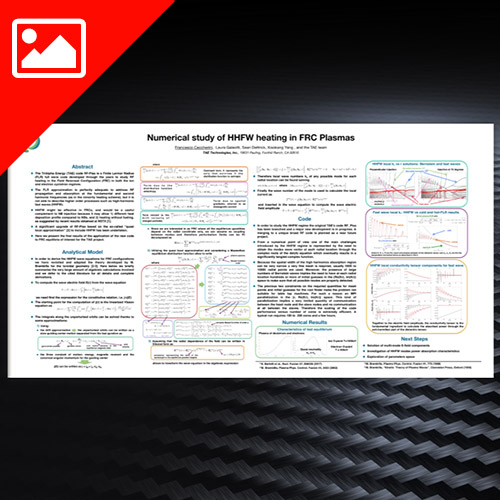
Oct 2017 | Research Library, Posters, Fusion Energy, Fusion Research, Fusion Science, Fusion Technology, Heating, Plasma Research, Theory, Waves
October 2017 | Francesco Ceccherini | APS-DPP | Poster
The Tri Alpha Energy (TAE) code RF-Pisa is a Finite Larmor Radius (FLR) full wave code developed through the years to study RF heating in the Field Reversed Configuration (FRC) in both the ion and electron cyclotron regimes.
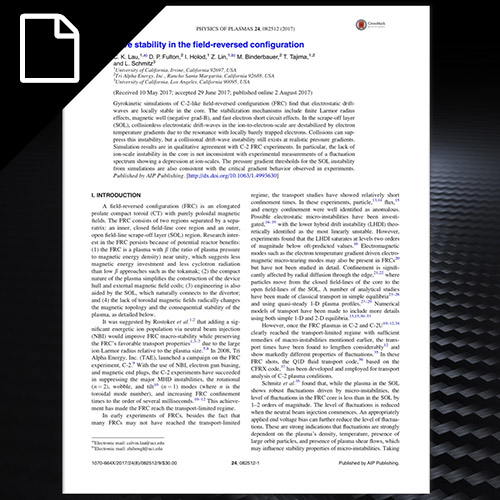
Aug 2017 | Research Library, Papers, Equilibrium, Fusion Energy, Fusion Research, Fusion Science, Fusion Technology, Simulation, Stability, Theory, Turbulence, Waves
August 2017 | C. K. Lau | Physics of Plasmas | Paper
Gyrokinetic simulations of C-2-like field-reversed configuration (FRC) find that electrostatic drift- waves are locally stable in the core. The stabilization mechanisms include finite Larmor radius effects, magnetic well (negative grad-B), and fast electron short circuit effects.
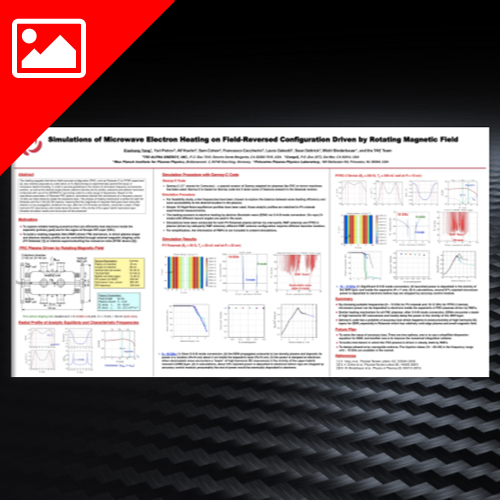
Oct 2016 | Research Library, Posters, Fusion Energy, Fusion Research, Fusion Science, Fusion Technology, Plasma Research, Simulation, Waves
October 2016 | Xiaokang Yang | APS-DPP | Poster
The rotating magnetic field-driven field-reversed configuration (FRC), such as Rotamak or PFRC experiment, was recently proposed as a test bench at TAE Technologies to experimentally pioneer the study of microwave electron heating.
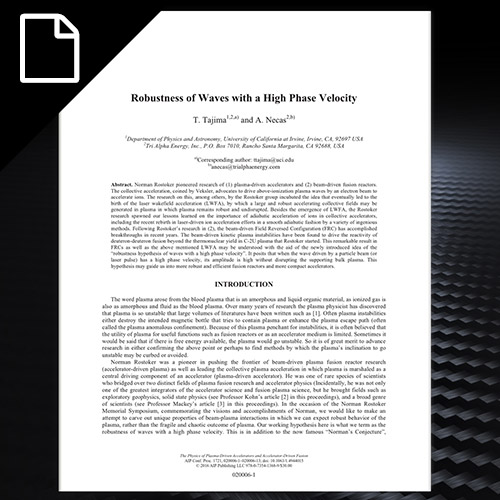
Mar 2016 | Research Library, Papers, Fusion Energy, Fusion Research, Fusion Science, Fusion Technology, Modeling, Stability, Theory, Transport, Waves
March 2016 | T. Tajima | AIP Conference Proceedings | Paper
Norman Rostoker pioneered research of (1) plasma-driven accelerators and (2) beam-driven fusion reactors. The collective acceleration, coined by Veksler, advocates to drive above-ionization plasma waves by an electron beam to accelerate ions. The research on this, among others, by the Rostoker group incubated the idea that eventually led to the birth of the laser wakefield acceleration (LWFA), by which a large and robust accelerating collective fields may be generated in plasma in which plasma remains robust and undisrupted.
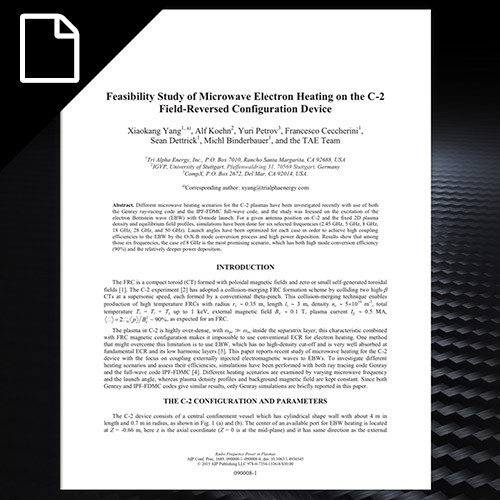
Feb 2015 | Research Library, Papers, Experiment, Fusion Energy, Fusion Research, Fusion Science, Fusion Technology, Heating, Simulation, Waves
February 2015 | X. Yang | AIP Conference Proceedings | Paper
Different microwave heating scenarios for the C-2 plasmas have been investigated recently with use of both the Genray ray-racing code and the IPF-FDMC full-wave code, and the study was focused on the excitation of the electron Bernstein wave (EBW) with O-mode launch.
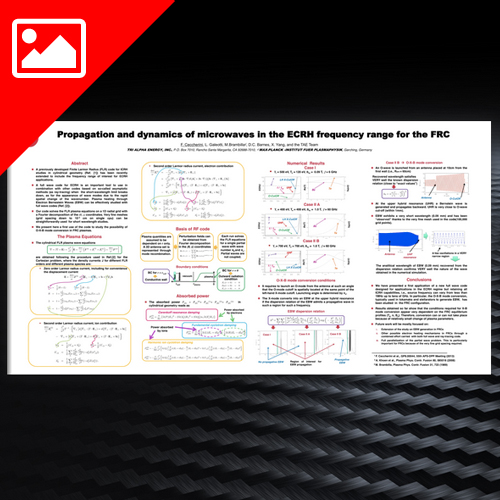
Oct 2014 | Posters, Fusion Energy, Fusion Research, Fusion Science, Fusion Technology, Plasma Research, Research Library, Simulation, Waves
October 2014 | F. Ceccherini | APS-DPP | Poster
A previously developed Finite Larmor Radius (FLR) code for ICRH studies in cylindrical geometry has been recently extended to include the frequency range of interest for ECRH applications.





